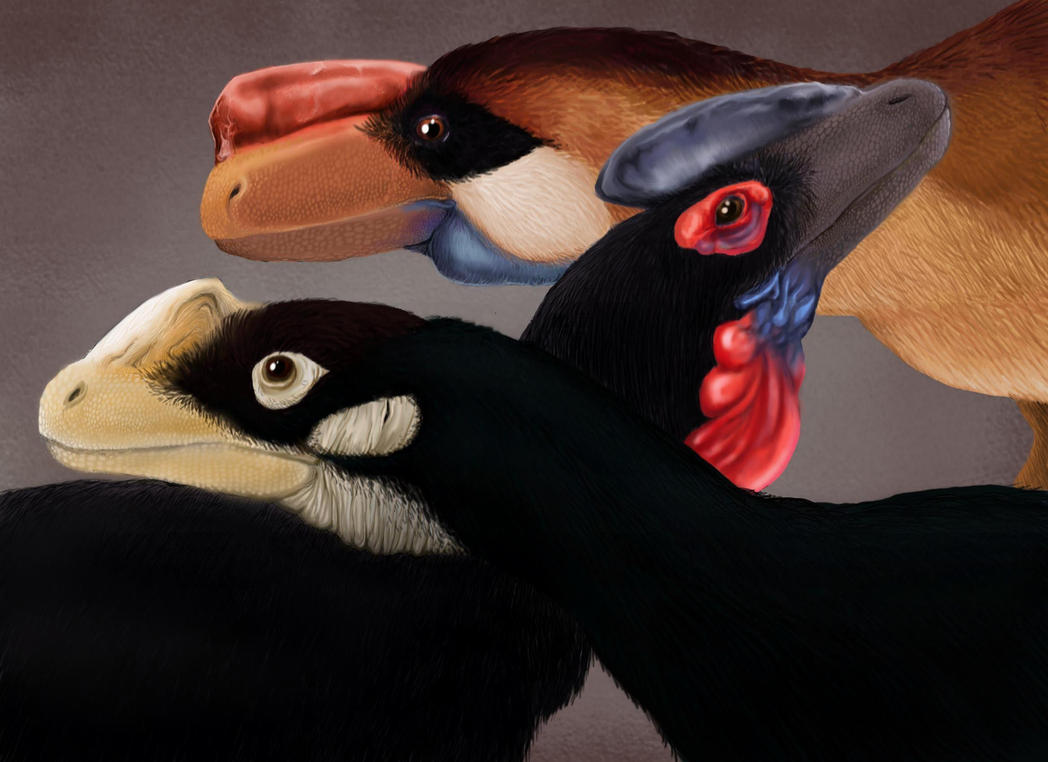Post by gigadino96 on Jan 15, 2014 16:38:02 GMT 5

Compsognathus longipes
Compsognathus (/k?mp?s??n???s/; Greek kompsos/

 ; "elegant", "refined" or "dainty", and gnathos/
; "elegant", "refined" or "dainty", and gnathos/
 ; "jaw") is a genus of small, bipedal, carnivorous theropod dinosaurs. Members of its single species Compsognathus longipes could grow to the size of a turkey. They lived around 150 million years ago, the latest Kimmeridgian age of the late Jurassic period, in what is now Europe. Paleontologists have found two well-preserved fossils, one in Germany in the 1850s and the second in France more than a century later. Today, C. longipes is the only recognized species, although the larger specimen discovered in France in the 1970s was once thought to belong to a separate species and named C. corallestris.
; "jaw") is a genus of small, bipedal, carnivorous theropod dinosaurs. Members of its single species Compsognathus longipes could grow to the size of a turkey. They lived around 150 million years ago, the latest Kimmeridgian age of the late Jurassic period, in what is now Europe. Paleontologists have found two well-preserved fossils, one in Germany in the 1850s and the second in France more than a century later. Today, C. longipes is the only recognized species, although the larger specimen discovered in France in the 1970s was once thought to belong to a separate species and named C. corallestris.Many presentations still describe Compsognathus as "chicken-sized" dinosaurs because of the small size of the German specimen, which is now believed to be a juvenile. Compsognathus longipes is one of the few dinosaur species for which diet is known with certainty: the remains of small, agile lizards are preserved in the bellies of both specimens. Teeth discovered in Portugal may be further fossil remains of the genus.
Although not recognized as such at the time of its discovery, Compsognathus is the first theropod dinosaur known from a reasonably complete fossil skeleton. Until the 1990s, it was the smallest known non-avialan dinosaur; earlier it was the closest supposed relative of the early bird Archaeopteryx.

Sinosauropteryx prima
Sinosauropteryx (meaning "Chinese reptilian wing", in Chinese
 ?: zhonghua longniao) is a compsognathid dinosaur. Described in 1996, it was the first dinosaur taxon outside of Avialae (birds and their immediate relatives) to be found with evidence of feathers. It was covered with a coat of very simple filament-like feathers. Structures that indicate colouration have also been preserved for some of the feathers, which makes Sinosauropteryx the first non-avialian dinosaurs where colouration has been determined. Colouration includes a reddish and light banded tail. Some contention has arisen with an alternative interpretation of the filamentous impression as remains of collagen fibres, but this has not been widely accepted.
?: zhonghua longniao) is a compsognathid dinosaur. Described in 1996, it was the first dinosaur taxon outside of Avialae (birds and their immediate relatives) to be found with evidence of feathers. It was covered with a coat of very simple filament-like feathers. Structures that indicate colouration have also been preserved for some of the feathers, which makes Sinosauropteryx the first non-avialian dinosaurs where colouration has been determined. Colouration includes a reddish and light banded tail. Some contention has arisen with an alternative interpretation of the filamentous impression as remains of collagen fibres, but this has not been widely accepted.Sinosauropteryx was a small theropod with an unusually long tail and short arms. The longest known specimen reaches up to 1.07 m (3.5 ft) in length, with an estimated weight of 0.55 kg (1.2 lb). It was a close relative of the similar but older genus Compsognathus, both genera belonging to the family Compsognathidae. Only one species of Sinosauropteryx has been named: S. prima, meaning "first" in reference to its status as the first feathered non-avialian dinosaur species discovered. Three specimens have been described. The third specimen previously assigned to this genus represents either a second, as-yet unnamed species or a distinct, related genus.
Sinosauropteryx lived in what is now northeastern China during the early Cretaceous period. It was among the first dinosaurs discovered from the Yixian Formation in Liaoning Province, and was a member of Jehol Biota. Well-preserved fossils of this species illustrate many aspects of their biology, such as their diet and reproduction.




